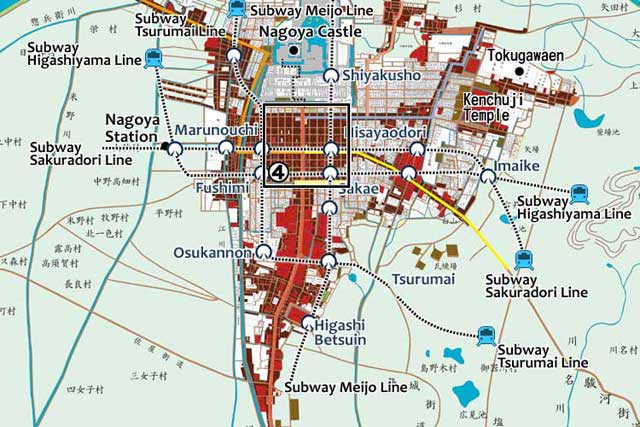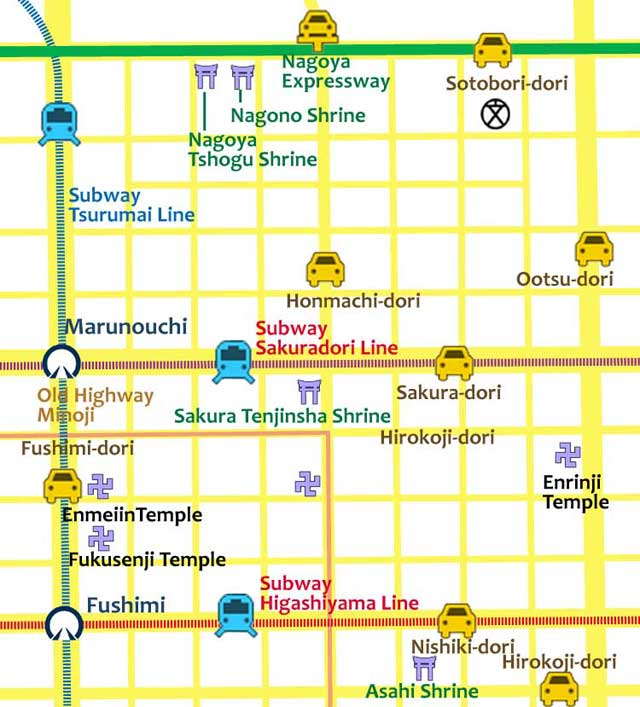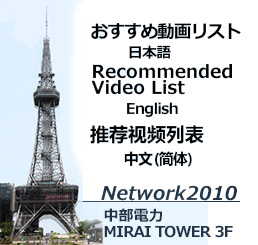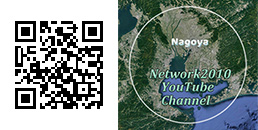Nagoya Castle Town of the Edo period(1603-1868)

Ad banner inquiry----info@network2010.org

The central area of Nagoya Castle Town (present)

History
Tokugawa Ieyasu divided the south of Nagoya Castle squarely like Kyoto.It was called Goban-wari. Townspeople were made to live in the square division and the surroundings of it were made into a samurai's dwelling. The temple has been arranged in the center of a division and the life of townspeople was made to supervise.
Hommachi-dori goes to the center of Goban-wari from south to north . For the merchant of Nagoya,it was a wish to place a store along with Hommachi-dori. Near the Tenmacho-Hommachi crossing had become the center of commerce and finance till the middle of Meiji Era(1868-1912).
The Nagoya station was built in 1937 and Sakura-dori was made as a road which connects a station to the center of Nagoya.
Nagoya Toshogu shrine and a Nagono shrine suited in Nagoya Castle in the Edo period(1603-1868) . It became Meiji Era, and in order to build army barracks, it transferred to the its present location. The Toshogu festival was the greatest festival in Nagoya called Nagoya Matsuri(the Nagoya festival).
The customary event of zone 4
Nagoya Tshogu Festival
April 16 and 17 days/Nagoya Tshogu Shrine
April 17 is Tokugawa Ieyasu's anniversary of a his death. In order to hold a memorial service for him, the Nagoya Toshogu festivalis performed on April 16 and the 17th every year. Although the procession of a mikoshi(portable shrine) or a float was performed from Nagoya Castle to near Wakamiya Hachiman Shrine, since the float was burned down by war devastation, it was stopped after World War II. Now, only bugakucourt dances and music are performed on the stage of the precincts of the shrine on April 16.
Nagoya Shrine Festival(Sannomaru Tenno-matsuri Festival)
July 15.16/Nagono Shrine
This festival is the historied festival counted by Nagoya 3 grand festival with the Toshogu festival and the Wakamiya festival.It was held simultaneously with the Wakamiya festival at the Edo period, and was also called the Gion Matsuri(Gion festival). two Danjiris were decorated in Nagoya Castle, but there were burned down by war devastation.Danjiri of Chayamachi town is decorated in the precincts of the shrine now. The regular festival is held on July 16 of the next day of the eve. The mikoshi(portable shrine) procession is going and coming back to the Wakamiya shrine and a Nagoya shrine through Honmachi street.
Chojayamachi Ebisu Festival
Saturday and Sunday in mid-November
Chojayamachi town was relocated from Kiyosu with the Nagoya Castle construction. As a name of the town showed, the wealthy lived mostly. It became an area which a large and small fiber wholesale store accumulates after World War II, and was set to one of the major three fiber wholesale districts in Japan. Then, since a decline of the textile industry became remarkable and the vigor of the town was lost, this festival was started for regional vitalization from 2001. These days by such efforts, a unique restaurant and a boutique are opening the store. Since it was used also as one of the halls of Aichi Trienniale(International Art Festival), the challenge to a change in the town which is full of an art has started.


